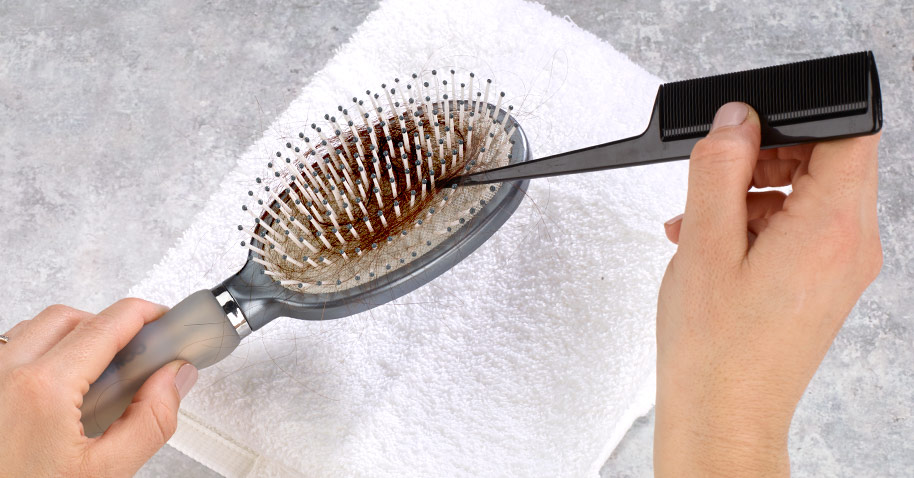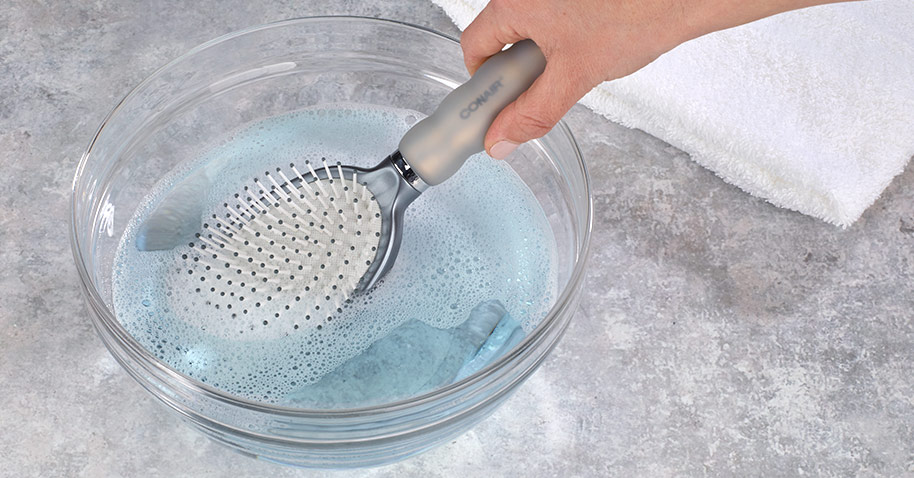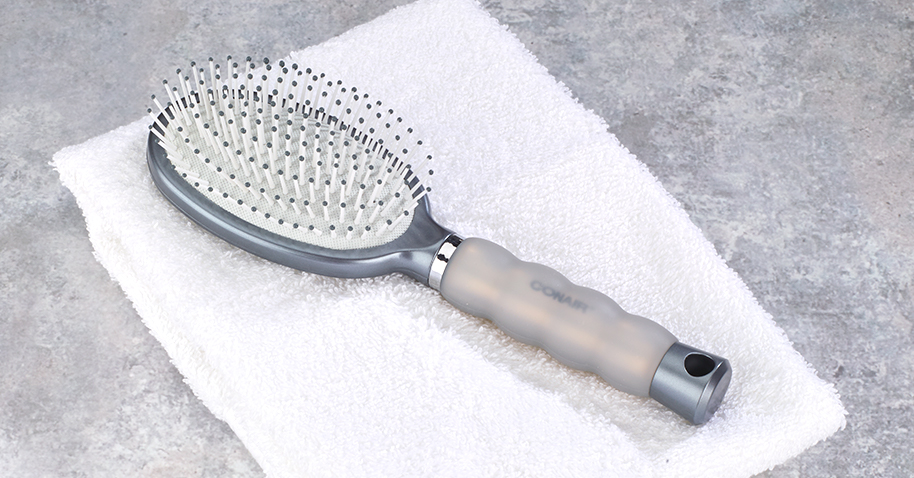How to Clean a Hairbrush in 3 Easy Steps
We’d be surprised if “Clean my hairbrush” is at the top of your to-do list. It’s probably not even on your to-do list. And hairbrush cleaning isn’t exactly something you can easily do while watching TV or relaxing over a candlelit dinner. But we’re guessing that every once in a while you look at your hairbrush and see some things you’d rather not see.
If you rarely give a second thought to the condition of your hairbrush, the fact is that a clean brush is much more likely to give you the results you want than one clogged with hair strands and product residue. And why run a dirty hairbrush through your hair after you’ve just taken the time to shampoo and condition it?
It’s also important to bear in mind that good hygiene is important for your overall health and well-being—and that includes your hair. Keeping your brush clean is a form of prevention, similar to washing your hands.
The good news is that the more often you clean your hairbrushes, the easier it will become and the better the results you’ll get from them. Here’s the long and the short of how to clean a hairbrush and keep it prepped for peak performance.
Step 1: Dig Out the Hair from the Hairbrush
You may wonder how so much hair gets stuck in the bristles—and how you can get it out. Relax, we have the answer.

Flat brushes:
A comb works wonders. Place it at the bottom of the hairbrush bristles and work it in until you can pull the hair up and out. Turn the brush and repeat until all the hair is removed. The end of a tail comb inserted between the bristles can help loosen the hair as well. Use a hair pick in the same manner for flat brushes with wide-spaced, ball-tipped bristles.
Round brushes:
Loosen the hair in several places by inserting a narrow-tapered object between the packed hair and the base of the bristles. (We’ve heard of pens, pencils, awls, ice picks and slim screwdrivers – but we recommend the end of a rat tail comb.) Use a small pair of scissors to cut the loosened hair between the columns of bristles and pull the pieces out. You won’t be struggling to unwind if you cut the hairs first.
Step 2: Wash out the Hairbrush Dirt and Grime

Now that you can see down to the bristles’ base, it’s time to take your hairbrush cleaning to the next level. We know what’s down there: dust, dirt, lint, product buildup, oil and skin flakes. Not pretty.
Fill your clean sink or a good-sized bowl with warm water. Add a drop of clarifying shampoo (you can also use baby shampoo, liquid Castile soap or another clear shampoo). Swish it around to get the suds going.
Your hairbrush type matters at this stage:
- Plastic or metal/plastic brushes: Drop them in the soapy water and soak for 3 minutes.
- Brushes with fabric/soft padding at the base: Dip them in the soapy water without submerging the padding. Dip, shake. Dip, shake.
- Wooden brushes: Do same as above. Dip, shake. Submerging a wooden brush could degrade the wood and its finish.
- Natural bristle brushes: Depending on the handle and base material, there’s nothing wrong with soaking it for a few minutes. Many natural bristle brushes have a wooden base and handle; in that case, clean it as you would a wooden brush.
After soaping, soaking and swishing, rinse the brush thoroughly under warm water and study your work. If it looks good, proceed to Step 3. If you’re not comfortable with the results, scrub the brush and base with a soft, clean toothbrush to brush away anything that’s left. Rinse again.
Step 3: Dry Your Hairbrush

Wipe the brush with a clean, dry cloth and shake it over the sink to remove excess water. All hairbrush types need cleaning, but how you dry yours depends on the type (not to mention the climate).
- Plastic or plastic/metal brushes: Place them face down on a clean, dry towel and allow them to air-dry overnight.
- Brushes with fabric/soft padding at the base: if you live in a dry climate, you can place them face down on a clean, dry towel to air-dry overnight. If things are humid, we recommend using your hair dryer to do the work, avoiding a moldy result.
- Wooden brushes: In a dry climate, these should dry nicely overnight. Try hanging it from your shower head to let the air move freely through the tight bristles. In high humidity, use your hair dryer on a low setting to pull out moisture before hanging.
- Natural bristle brushes: Similar to wooden brushes, these need plenty of airflow to dry. Hanging is best, though you can place it on a clean, dry towel in low humidity overnight. In higher humidity, drying it with your hair dryer on a low setting will accelerate the process and keep mustiness at bay.
Don’t Give Regular Cleanings the Brush-Off
To avoid buildup and make cleaning easier, be sure to quickly rinse or wipe down your brushes once a week. Be diligent and you’ll probably only need to give them a deep clean once a month.
And don’t limit cleanings to bristles and barrels. Dirt, grime, and product residue can also build up on the handles, so remember to clean those too.